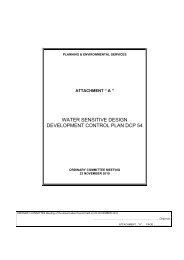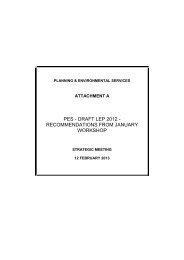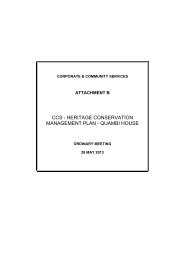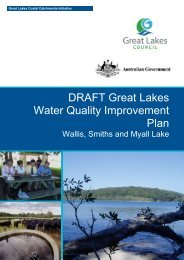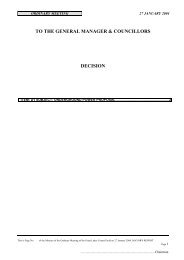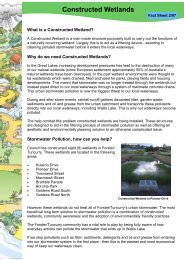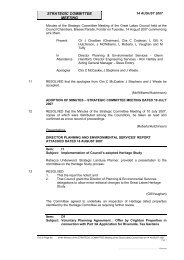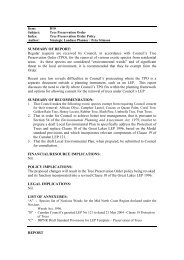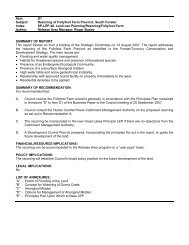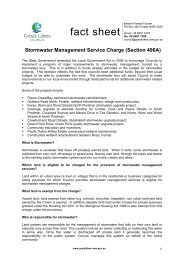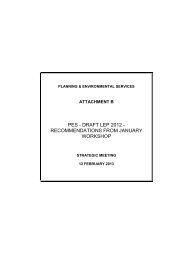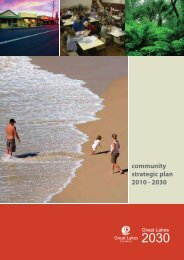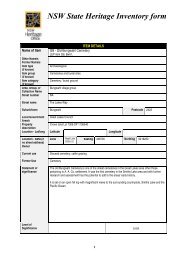13.2 The Wallis Lake Estuary Management Committee - Great Lakes ...
13.2 The Wallis Lake Estuary Management Committee - Great Lakes ...
13.2 The Wallis Lake Estuary Management Committee - Great Lakes ...
Create successful ePaper yourself
Turn your PDF publications into a flip-book with our unique Google optimized e-Paper software.
<strong>Wallis</strong> <strong>Lake</strong> <strong>Estuary</strong> <strong>Management</strong> Plan<br />
E.5<br />
<strong>Management</strong> Area A, B, C, D, E, F<br />
<strong>Management</strong> Objective<br />
Establish abundance and distribution data for aquatic vegetation within the estuary<br />
Action<br />
Action<br />
Indicative Priority Responsibilities Progress<br />
No<br />
Cost<br />
E.5.1 Continue with Posidonia australis surveys on a regular basis $5,000 +<br />
staff time<br />
Medium (B5) GLC First survey conducted in<br />
2002<br />
E.5.2 Continue the seagrass monitoring program, coordinated under the HLP In HLP Medium (B5) GLC Ongoing<br />
budget<br />
E.5.3 Record the timing, frequency, magnitude, location and species of phytoplankton Staff time High (A5) GLC<br />
and macro-algae blooms<br />
Comments<br />
Posidonia australis surveys conducted approximately biannually will allow a detailed assessment of any changes in the health and size of all Posidonia australis beds in the<br />
estuary. Whereas the SMP will provide information on any seasonal and long-term changes in health and density for a selection of seagrass beds containing Posidonia australis,<br />
Zostera spp, Ruppia sp and Halophila sp.<br />
Sporadic phytoplankton and macro-algae (eg Elodea, Eurasian Watermilfoil, Chaetomorpha sp) blooms that may occur after rainfall events or during Spring when water<br />
temperatures warm up are likely to be missed during aquatic vegetation surveys. Details on these blooms should be recorded so that any patterns in their occurrence or<br />
information on the causes of the blooms can be assessed.<br />
NSW DPI repeated the survey of West et al (1985) in 2004 to accurately determine the current distribution of aquatic habitats and identify and assess any long-term changes.<br />
This will help identify aquatic habitat areas under threat that require immediate management action.<br />
46




